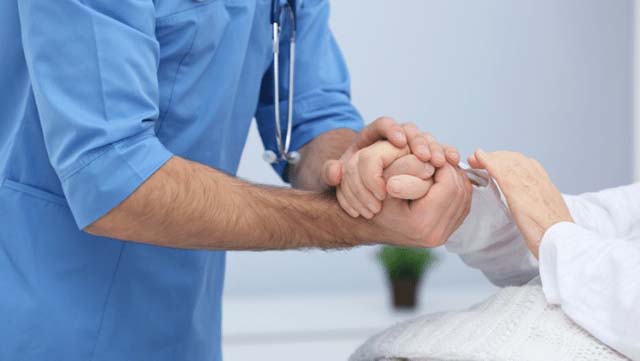Every October 19, World Breast Cancer Day is commemorated , a date promoted to promote early diagnosis and increase access to controls and treatments.
According to the International Agency for Research on Cancer (IARC) , more than one million people are diagnosed with this disease in the world and 400,000 die each year for this reason . In Argentina, 22,000 cases are detected per year and it is the most common cancer. It is estimated that 77% of new cases and 84% of deaths occur in women.
Among the non-modifiable risk factors for breast cancer are sex (women have a higher risk of developing breast cancer) and age (the chances of having this disease increase, especially in women close to menopause).
With respect to people with direct relatives with this pathology, Dr. Valeria Cáceres belonging to the Functional Mastology Unit “Ángel H. Roffo” Institute of Oncology (IOAHR), maintains: “Genetic or hereditary cancer is the risk factor most important, but not the most frequent since only between 5% and 7% of patients with breast cancer have a genetic basis in their origin. The presence of a first-degree relative (mother, sister, daughter) with breast cancer increases the risk of suffering from the disease between 1.5 and 3 times that of the general population. This risk increases the earlier the age of onset in the affected family member, and with the number of cases in the family."
On the other hand, there are modifiable factors that increase the risk of developing breast cancer. In this sense, overweight women have a greater chance of contracting this disease and suffering from it again than those who have a healthy weight. This is due to the production of estrogen in fatty tissue. At the same time, people who engage in physical activity can control their weight more efficiently, thus reducing fat levels in their body.
Alcohol consumption is also considered a risk factor, since it can increase estrogen levels in the body as well as the risk of cancer in the breasts and other locations by damaging the DNA of cells. In the same way, smoking not only increases the possibility of developing this and other types of cancer, but it can also cause other diseases that complicate the treatment of breast cancer (due to alterations in vascularization and blood circulation, lung conditions).
Regarding its detection, although in its initial stages it is usually asymptomatic, depending on the stage and type of cancer it can manifest as a lump in the breast, an indurated area (where there is generalized thickening and hardening of the skin) with or without redness of the skin. skin or edema, a retraction, leakage through the nipple or through a lump in the armpit.
The Argentine League to Fight Cancer (LALCEC) highlighted that self-examination is not enough to detect it, so it is necessary to make a periodic medical visit to receive the pertinent recommendations from a medical professional.
Dr. Luciana D`Angelo , mastologist at LALCEC, assures: “Early detection is essential. It is necessary to carry out a periodic medical visit, in which each patient is advised and referred to undergo the relevant studies, such as mammography, a breast ultrasound and, in cases that require it, an MRI and in selected cases other imaging studies. In addition, it is advisable to consult a doctor immediately if you self-detect a nodule, breast mass or enlarged axillary lymph nodes or an effusion through the nipple."
Technological advances and permanent discoveries in medicine have made it possible to detect different subtypes of this cancer, allowing the development of new therapeutic procedures, aimed at specific molecular targets and the inclusion of immunotherapy in the case of the so-called “triple negatives.” ”. This means that, with good follow-up through the annual examination, together with technology and scientific advances, the chances of being cured of breast cancer are increasing; even more so when it is discovered early, because less invasive treatments are available.
If the tumor is detected at this early stage, the disease reaches its maximum level of cure. For this reason, regarding mammograms, the Hospital de Clínicas recalled the recommendation to perform it annually from the age of 40 to all asymptomatic women, with normal clinical studies and no history of the disease, and in patients with a history of breast cancer in first-degree relatives, it is recommended to do it 10 years before the age of cancer detection of the closest relative.
From LALCEC, they suggest that women from the age of 40 undergo at least one mammogram every two years, along with a physical examination of the breasts by a health professional. In the case of women under 40 years of age, they should consult with their doctor about whether or not to have a mammogram.
















